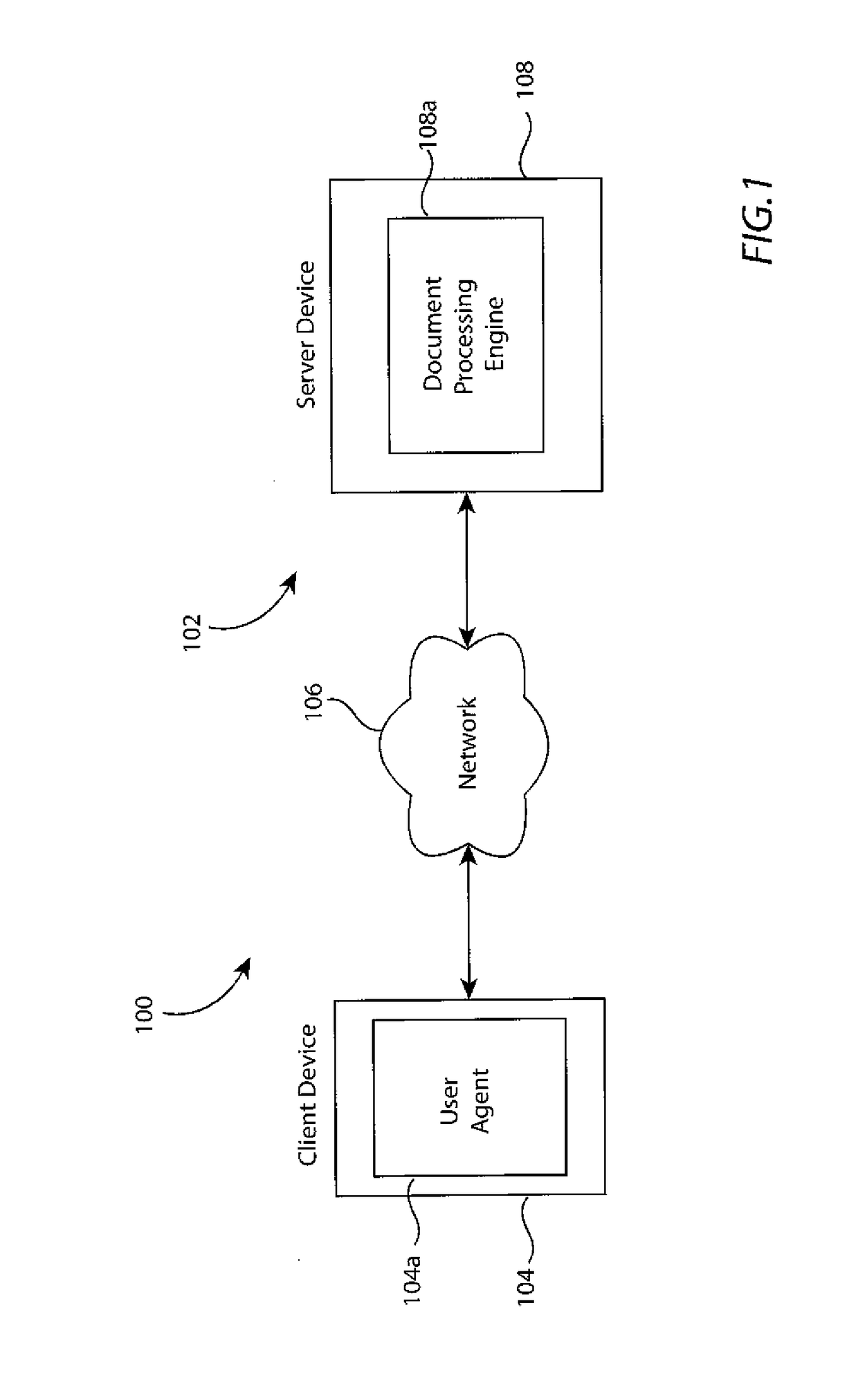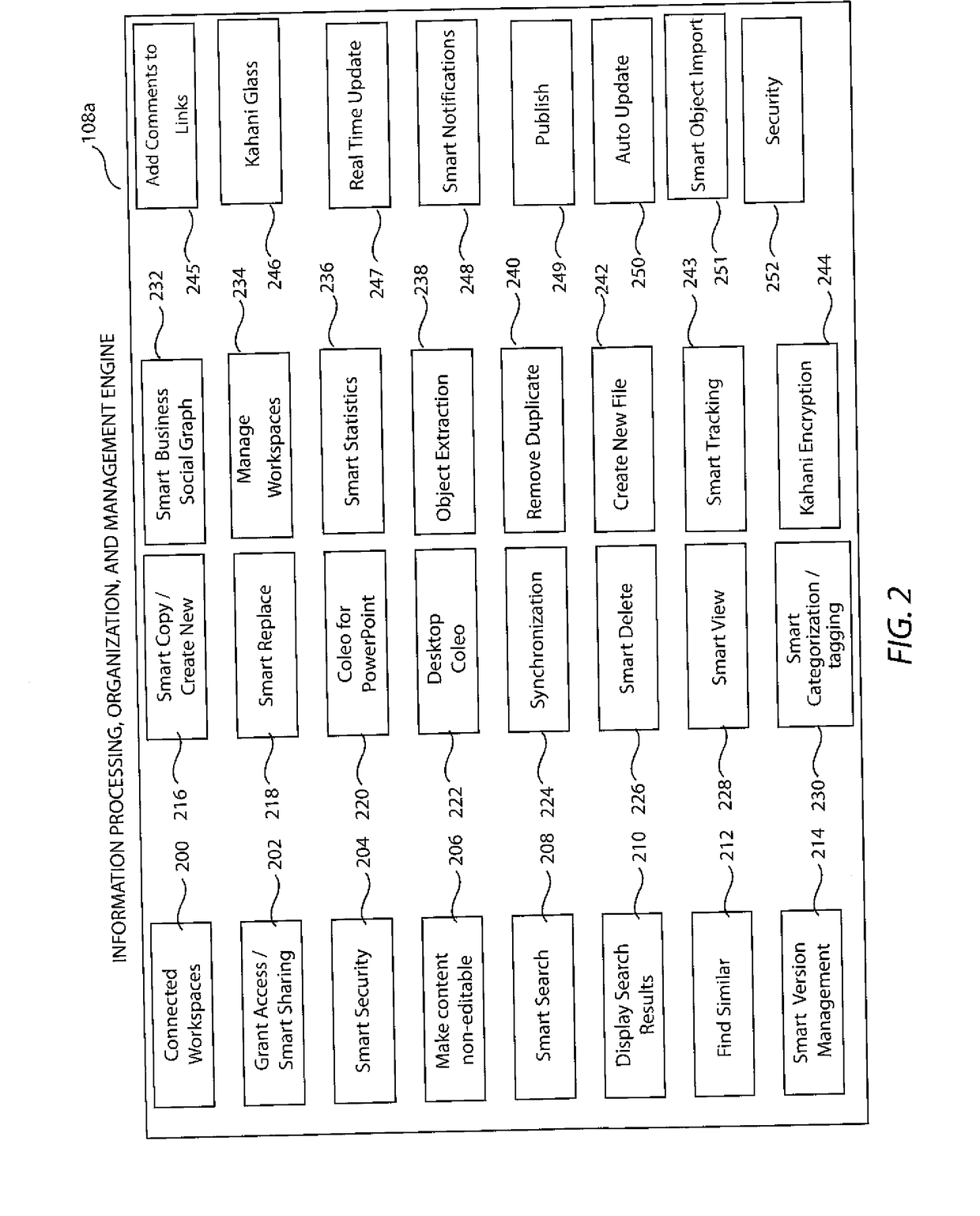Prior art cloud
file sharing applications, as defined in the glossary, only enable sharing of complete documents and do not organize shared documents by owner, preventing users from quickly determining ownership of content that is shared with them.
However, for all other users with access to the Mini-objects, this setting will affect the forced propagation of changes on the cloud-based application and the local application corresponding to the
original application that created the Mini-object.
However, for all other users with access to the Mini-objects, this setting will affect the search functionality on the cloud-based application and the local application corresponding to the
original application that created the Mini-object.
However, for all other users with access to the Mini-objects, this setting will affect the download functionality on the cloud based application and the local application corresponding to the
original application that created the Mini-object.
However, for all other users with access to the Mini-objects, this setting will affect the viewing functionality on the cloud-based application and the local application corresponding to the original application that created the Mini-object.
This capability is not available with any prior art applications, especially for Mini-objects and for Mini- and
Macro-objects that reside in a distributed cloud
workspace.
However, for all other users with access to the Mini-objects, this setting will affect the editing functionality on the cloud-based application and the local application corresponding to the original application that created the Mini-object.
The user has no idea who is the owner of the documents, and the search is limited to documents that are shared with the user.
This results in a lost opportunity, especially within enterprises, where employees create and recreate the same content over and over again because they are unaware that the content already exists.
Consequently, prior art cloud
file sharing applications do not enable users to request access to content belonging to owners who have not previously shared their content with the user.
Prior art applications do not provide this capability.
Prior art applications do not provide this capability.
Prior art applications do not enable version control and version control management (e.g., replace / delete everywhere) at the Mini- and Micro-
object level and do not enable
rollback capabilities.
Prior art applications do not enable users to replace Mini-object(s) with other Mini-objects.
This functionality is not available with any prior art applications, especially for providing access to shared content across distributed cloud databases directly within PowerPoint®.
Prior art applications such as Microsoft® PowerPoint® allow users to change fonts across the whole document but in a very limited fashion.
Third, the user is not enabled to change the
font size across the whole document.
Fourth, the user is not enabled to specify where to make the changes, for example, in the title or just the content or just the header / footer.
Prior art cloud
file sharing applications have the following limitations:1. Only synchronize
Macro-objects and have no concept of Mini- or Micro-objects.2. Do not provide any mechanism to identify the owner of shared content once the content is synchronized to the user's
local machine.3. Does not allow users to mark content for sharing in an offline mode.4. Allows users to only select which folders to synchronize, does not distinguish between shared and owned content, and does not distinguish between owners of various shared content.
Prior art applications only allow users to view all
Macro-objects within one folder at a time and even then do not provide users with the ability to sort or filter the content by type.
Prior art applications do not provide this capability.
 Login to View More
Login to View More  Login to View More
Login to View More 


